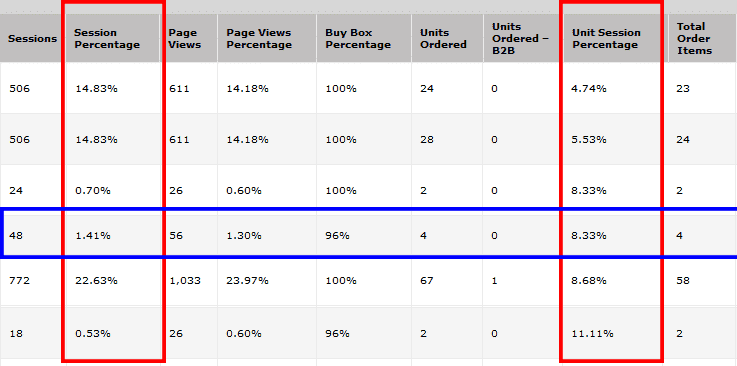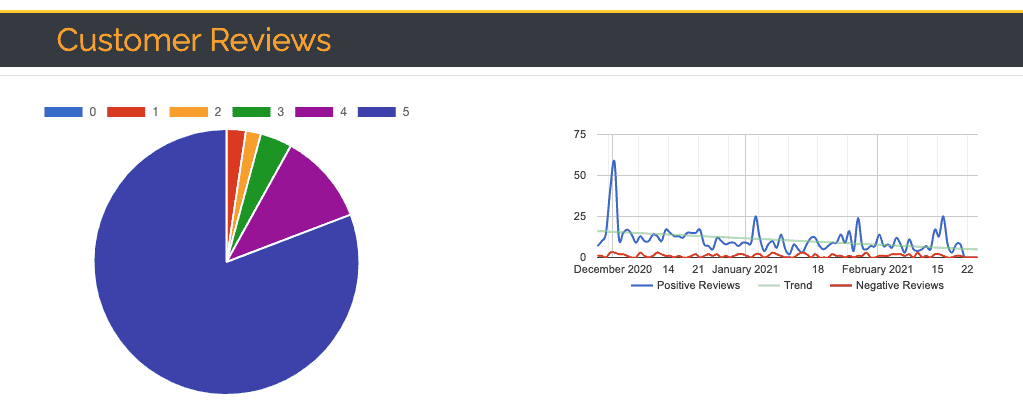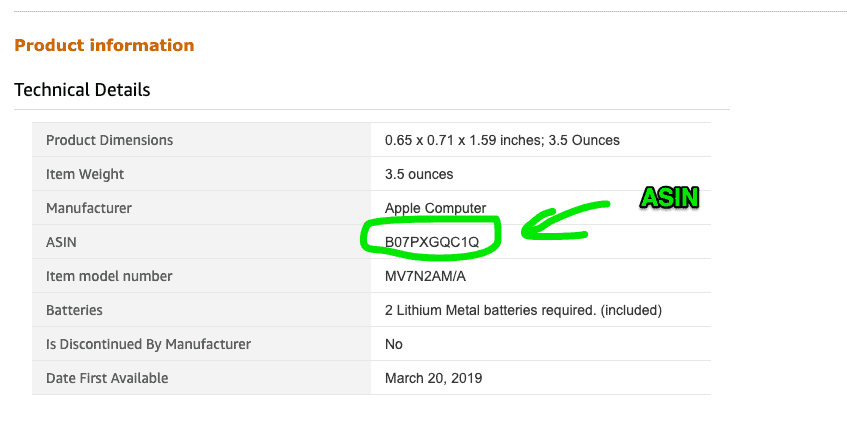Amazon is the largest online marketplace today. With over 398 million products listed and more than 26 million transactions per day, it’s no wonder more and more business owners are selling their products on Amazon.
However, all is not rosy. Selling on Amazon has become increasingly difficult in recent years, with competition from cheap, low-quality counterfeits and unscrupulous resellers trying to make a profit from the arbitrage made selling your products.
For potential buyers of Fulfilled by Amazon (FBA) businesses, there is a real concern about buying a business that could easily be hijacked and copied, potentially losing the “buy box” and associated revenue. If you want to sell your private label business in the future, this concern can directly impact your ability to sell.
If you are a seller who makes and sells your own private label products on Amazon, you will need to sign up for Amazon’s updated trademark registry.
What does Amazon consider a “brand” and why should you care about Amazon’s brand registry?
To quote Amazon:
“The Amazon Brand Registry is available to sellers who make or sell their own branded products. Manufacturers can add their brand to the Amazon Brand Registry and register themselves as a brand owner. The goal of Amazon Brand Registry is to make it easier for sellers to manage their own brands and list their products on Amazon.”
Registering your brand proves that you own the products you sell; once approved, you get the added protection Amazon gives brands.
If you sell (or ever want to sell) your private label FBA business, registering your brand can help increase its value. When you buy, you’ll have the peace of mind that you’re buying an established and trusted brand that’s protected from hijackers and copycats.
To better understand the changes to Amazon’s brand registry and how it can benefit you as a seller, we need to take a closer look at the first version of the brand registry and some of the challenges sellers faced when using it.
Amazon Brand Registry 1.0 and its problems
Prior to the Amazon Brand Registry updates, a seller could register their private label relatively easily. Sellers simply had to prove ownership of the domain name for the brand and provide images of the product and packaging with the brand name. The idea was that trademark registration would help sellers protect their offerings and prevent copyright infringement by counterfeiters and resellers.
However, the first version of the registry did not provide the protection that sellers expected. The registry offered limited protection, and reporting infringements was a tedious and slow process.
To improve the customer experience and make it easier to find products, Amazon allows the same listing to be used by multiple sellers. Unscrupulous sellers would “hijack” listings and sell similar or counterfeit goods as if they were real by piggybacking on a legitimate product listing. Customers would buy products from an offer thinking it was the original brand and receive a non-genuine product.
In many cases, customers didn’t even realize the product was a fake until they tried to make a warranty claim. When they received poor customer service from the fake seller, they left a bad review for the original offering. Such reviews resulted in damage to the original brand’s reputation and goodwill with customers that the brand owner had invested time and money in building, and also negatively impacted Amazon’s trusted status as a platform that provides a great customer experience.
To make matters worse, the seller bore the burden of proof in reporting the infringement. It was up to the seller to prove that their branding and copyright had been infringed.
Another problem with these hijackers was that even if they got caught, it was too easy for them to open a new account and start over. They sold as many products as they could, and when they got “burned” (flagged and shut down by Amazon), they simply opened a new Amazon account and started over.
As a seller, you are also Amazon’s customer. If you can’t trust Amazon to protect your brand, the company knows you will churn. Fewer sellers hurt Amazon by impacting market share and opening the door for a competitor to throw their hat in the ring.
The updated brand registry system goes a long way toward fixing these issues and aims to improve the customer experience for sellers and consumers alike.
Amazon Brand Registry 2.0 Improvements
The updated brand registry – Amazon Brand Registry 2.0 – is a way for Amazon to show that it is focused on people who are serious about their brands and not selling junk products.
Amazon has made some significant improvements to the brand registry program since May 2017. While there will be ongoing updates, here are the major improvements to Amazon Brand Registry 2.0 so far:
- The Amazon Brand Registry program now has its own user interface and login, separate from Seller Account Central.
- The new interface has improved reporting tools to deal with counterfeit products and hijacked listings.
- Sellers can access powerful new search tools to help them find products that infringe their copyright.
- Amazon has a dedicated team to deal with reported infringements.
Amazon made these changes to meet its original business goals. As stated by Amazon CEO Jeff Bezos:
“We have three big ideas at Amazon that we’ve stuck with for 18 years, and they’re the reason we’re successful: put the customer first. Invent. And be patient.”
Amazon’s primary goal is to put the customer experience first. Counterfeit products, hijacked offers and unauthorized resellers create a negative experience for customers. These negative experiences directly impact Amazon’s bottom line.
Let’s take a look at what these changes mean and how they improve both the customer and seller experience.
Dedicated user interface
The new brand registration has its own user interface and login that is separate from Amazon Seller Central. This new dashboard makes it much easier to track which brands you’ve registered, while also giving you a clean and dedicated interface to manage any copyright or trademark infringements.
Powerful search tools
Until now, you could only detect trademark infringement if someone managed to hijack your listing’s buy box or if you had a bad review from a customer who bought a counterfeit item.
With the new search tool, you can search for trademark infringement:
- Product name
- ASIN
- Brand name
- Even keywords and images!
With these tools, you can find potential trademark infringement directly from your trademark registration dashboard, reducing potential lost revenue from would-be hijackers.
A+ Content
Formerly known as enhanced branded content, A+ content gives sellers greater control over their storefront. You can create better product descriptions, titles, and product images to set your product detail page apart from the competition.
Improved reporting tools
In the past, you had to report a violation via a form buried deep in the bowels of Amazon Help documentation. Sellers now have the ability to report a violation directly from their brand registration dashboard, making it quick and easy to deal with counterfeit products and listing hijackers.
Dedicated team to handle reported violations.
Before the updates, you had to deal with hijackers and counterfeiters on Amazon Marketplace yourself. You had to send a takedown notification directly to the hijacker/counterfeiter or purchase the counterfeit product to register a complaint. Once you notified Amazon, it usually took a few days for the company to remove the offending listing.
This cumbersome process led to many sellers complaining that Amazon didn’t care about its sellers. Now Amazon is taking a more proactive approach and wants to help sellers deal with counterfeits more efficiently.
Amazon claims that complaints can be handled in as little as four hours by a dedicated team of 300 employees who handle all claims related to violations.
This should speed up and improve the process for reporting counterfeit products and make it harder for counterfeiters to hijack your offering.
What about abuse – what keeps a competitor or counterfeiter from reporting you to negatively impact your ranking? Well, there are a few safeguards that are required of reporters:
- The complaint must be filed by the person/company filing the complaint and must include the following information: ASIN, email, name, rights asserted, etc.
- The complainant must provide a statement confirming that he/she is duly authorized to act on behalf of the trademark that has been infringed.
If you are registered as a trademark, all of this information is already on file and it is easy to report infringement through your trademark registration dashboard. If a counterfeiter tries to play games to remove your listing, they should be able to present information they don’t have access to.
This new process is good news for sellers. Previously, complaints could take days or even weeks to process, resulting in lost sales and damage to the legitimate seller’s reputation.
Ongoing improvements and updates
There are many more “rumored” improvements. These include:
- Unique Amazon URLs for your brand (e.g. amazon.com/my-brand).
- Customizable product detail pages with more features and a new design
- Ability to upload custom videos to your product page
All of these changes result in greater control for Amazon sellers over their private label and give them some of the much-needed protections sellers have been asking for, while improving the overall customer experience.
What you need to know to apply for Amazon’s brand registration program
Before you start registering your brand with Amazon, here’s a list of eligibility requirements. These have been taken directly from Amazon’s brand registration page for your convenience:
- Registered Trademark.
- This is your brand name that has a registered trademark ®. It can no longer be a pending trademark ™. Also, it must be a word mark and NOT a stylized, illustrated or design mark.
- For USPTO marks, the drawing type of the mark must be the same as “4 – STANDARD CHARACTER MARK” or “1 – TYPESET WORD(S)/LETTER(S)/NUMBER(S)”.
- If you would like to know more about the basics of trademark registration, here are a series of videos on the USPTO.GOV website.
- Your “Government Registered Principal Trademark Registration” or serial number.
- Images of the trademark’s logo.
- Images of products and packaging that bear the trademarked brand name. If the product is not trademarked, the packaging must be trademarked.
- A list of product categories (e.g., apparel, sporting goods, electronics) in which the brand will be listed.
- A list of countries where the brand’s products are manufactured and distributed.
Once you have all the information in the list above, go to Amazon’s trademark registration page.
While many of the eligibility requirements are unchanged, there is one really important change to the Amazon Trademark Registry that will impact you as a private label seller.
Registered trademark Requirement
The biggest change to the trademark registry requirements is that private label sellers must now have a registered trademark for their brand in order to qualify. Because of this, if you were registered prior to April 30, 2017, you will need to re-enrol in the program, as your previously registered trademarks will not automatically transfer to the new system.
In the past, you could have a pending trademark and still register by using the Pending Trademarks ™ icon on your branding; however, this is no longer allowed. To be eligible for registration in Brand Registry 2.0, you must have an “Active Registered Trademark” ®. This requirement means that your trademark application must have already been approved and is currently listed as “active” before you submit your application to the Amazon Brand Registry.
If you have not filed a trademark application before attempting to register your trademark, there may be a delay of six to ten months before you can properly register your products on Amazon while you wait for your trademark to be approved.
Helpful tips for registering your brand’s trademark
When you submit your trademark registration application to Amazon, the trademark information you provide must exactly match what is registered in the U.S. Patent and Trade Office database, including capitalization. Any discrepancies will result in rejection of your trademark registration application and further delay your access to the protection that trademark registration with Amazon provides.
When applying for your trademark, you will be asked to provide a copy of the product being used in commerce (a picture of your product is fine). If you cannot provide a picture, your application for this class could be denied.
Trademark registration costs money, and the cost varies depending on how you go about it. Trademark application fees can range from $225 to $400, plus additional fees for additional classes you want to protect. If you use a trademark attorney or a service like Trademark Engine, prices may be higher.
If you have multiple trademarks, the trademark registration process can get very expensive very quickly. Depending on your circumstances, registering a single “all-inclusive” trademark may be a better option than registering multiple independent trademarks.
Although Amazon does not charge to register your brand, they do require a trademark; the cost of trademark registration is a barrier to entry for some sellers.
Where you sell your products, either now or in the future, is a consideration when registering your trademark. If you only do business in the U.S., the U.S. Patent and Trademark Office (USPTO) will suffice. However, if you currently sell or intend to sell in Europe or internationally, then registration with the World Intellectual Property Organization (WIPO), which uses the “Madrid System,” may be more appropriate.
In either case, it is important to seek legal advice on what is right for you and your business. Enforcing trademark rights internationally is a much more complicated issue and is beyond the scope of what is covered here.
Improve the value of your brand through Amazon’s trademark registry.
Amazon’s brand registry updates are a step in the right direction. They improve the shopping experience for customers by making it harder for counterfeit products to be sold on the Amazon platform, thereby restoring buyer confidence.
Amazon has listened to sellers’ concerns and made changes to improve the overall selling experience. By creating a team to handle complaints and make it easier for sellers to report infringing listings as well as decide who can sell their product, Amazon is giving power back to sellers.
While requiring a registered trademark is a pain and additional cost for many sellers, it should be viewed as a positive. Brand protection is important, and Amazon’s requirement serves to reinforce the need to brand your products. However, if you are testing a product or bootstrapping, it may not make sense to brand individual products due to the cost.
So if you want to protect your private label on Amazon, legitimize it in the eyes of consumers, and give yourself an edge over the competition, Amazon’s updated brand registry is the way to go.
Add to these changes all the exciting new features on the horizon for registered brands, and the future looks bright for sellers on Amazon.
If you’re planning to buy a private label FBA business, then you’ll have the peace of mind that brand registration will protect your new business from counterfeiters and imitators.
If you are an existing seller, brand registration can increase the value of your business if you plan to sell. Build your own online selling empire and protect it with Amazon brand registration.
Brands Inside Zonmaster
With Zonmaster’s powerful autoresponder and auto-review requestor tools, you can target emails and Amazon review requests to specific brands. In the case of emails, you can also include branding images and brand-specific information inside the emails.
Check out Zonmaster today for more details and start your 15-day free trial now.
















